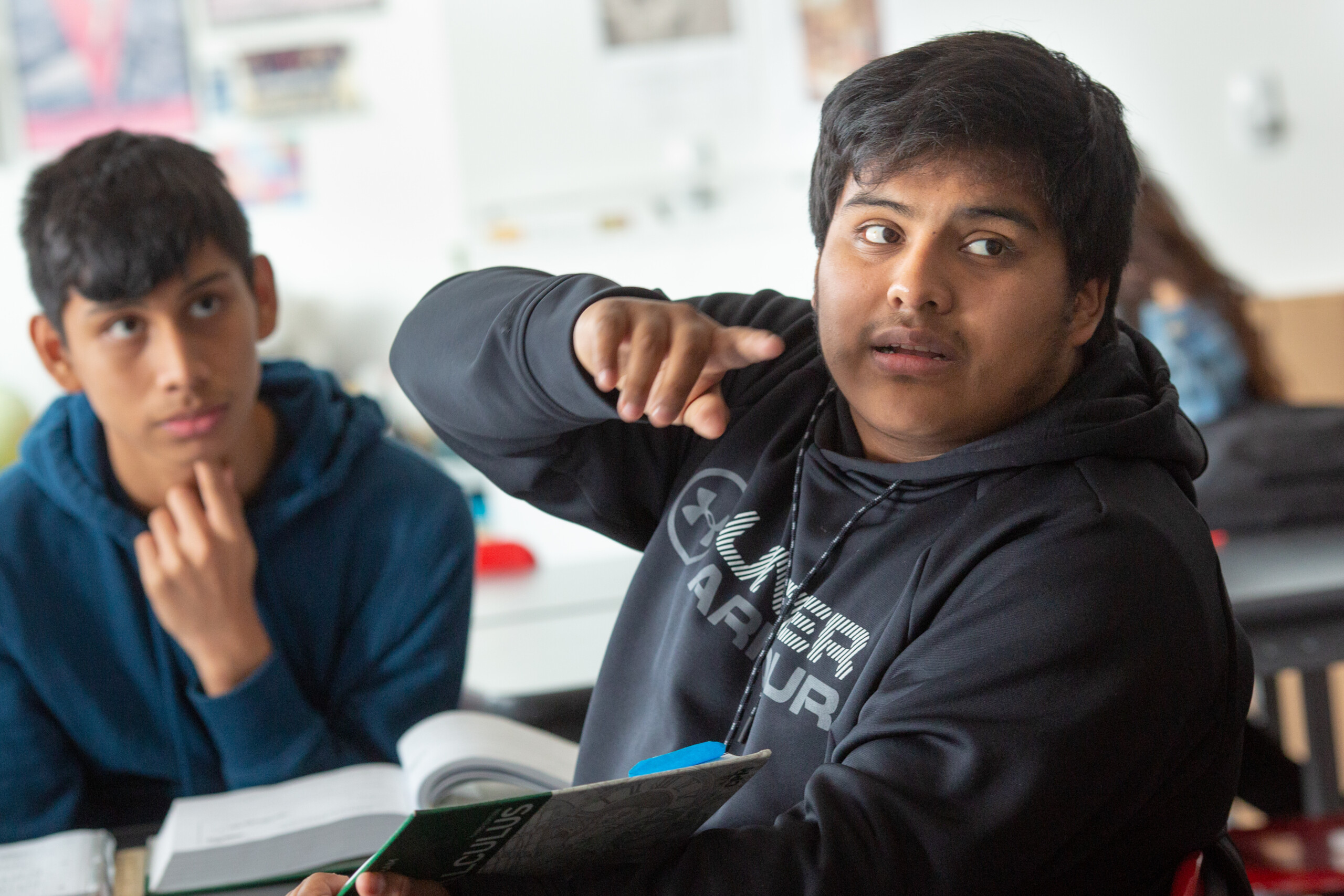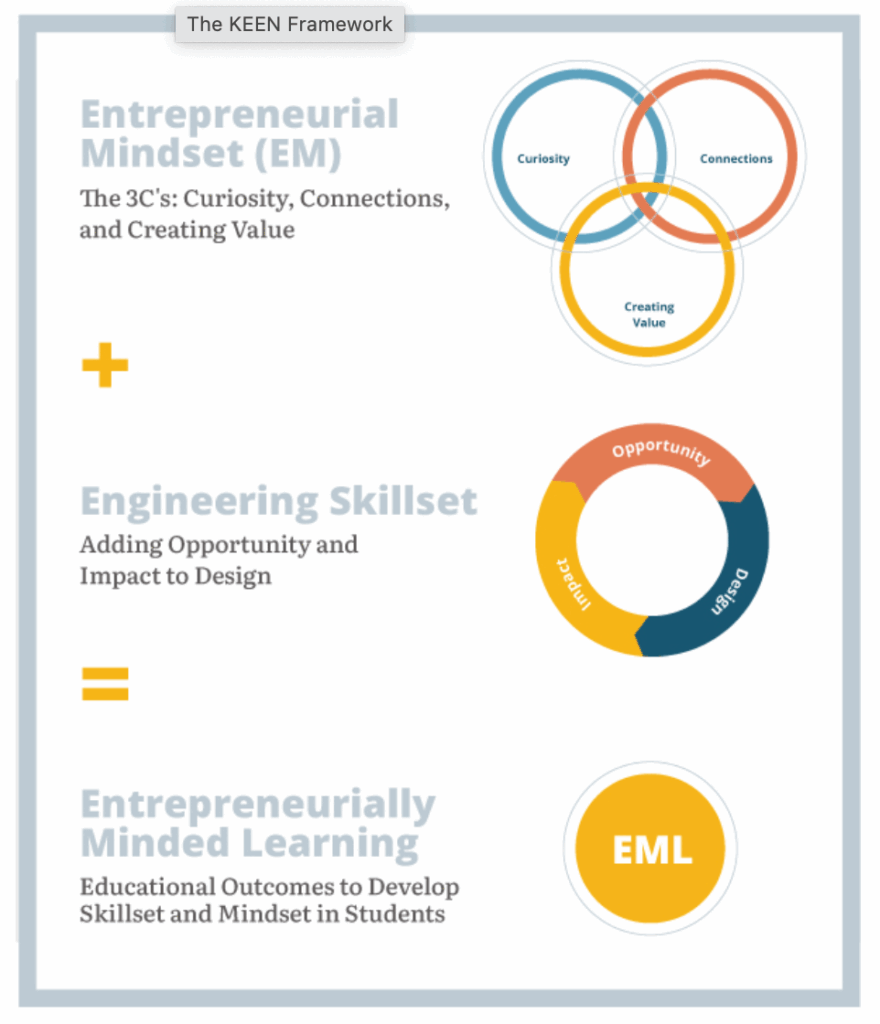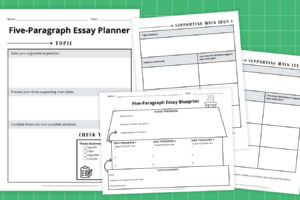
3 Human Skills That Make You Irreplaceable in an AI World
It’s a time of conflicting realities where access has been democratized but quality has atrophied (AI slop), the algorithm has gotten powerful but has developed increasingly murky incentives (YouTube and TikTok), and smart tools have made it easier than ever to act on problems worth solving, but agency has diminished (disengagement and mental health crises). It’s also a tectonic time for the education landscape, which is buckling beneath our feet.
With all the concern about the uniquely human and AI employment disruption, Ed Elson, host of the Prof G Markets podcast asked, “What would make me irreplaceable?”
“It has to do with doubling down on the things humans do especially well — the skills that don’t scale, that require curation, curiosity, and connectivity.”
- Curation “isn’t just scrolling and reposting. It’s a form of authorship — choosing the tone and the frame of the underlying message. If your brand is bold and irreverent, surface things that surprise or challenge the status quo. If your brand is analytical, specialize in spotting second-order insights: connecting economic data to consumer behavior or spotting patterns in quarterly earnings.”
- Curiosity: “To curate well, you need a big library to draw from. And to build that, you need curiosity — the willingness to explore outside your lane, to chase ideas that don’t have an immediate, or obvious, payoff. Curiosity builds creative range, and that lets you connect dots, sometimes across wildly different genres, that others don’t even see.”
- Connectivity “means showing up with warmth, curiosity, and follow-through. It’s being the person who brings the group together, who makes others feel smarter when they work with you, or more confident because you’re on the project. When others see that your heart’s in it, they trust you’ll go the extra mile, pay attention to the crucial details, and take personal responsibility. That trust is hard to earn and impossible to automate.”
In Education for the Age of AI, Charles Fadel said, “We need to curate knowledge” and “Pay more attention to procedural knowledge and conceptual knowledge, not just facts and figures, meaning declarative knowledge.” Second, Fadel argues we should teach priority competencies (e.g., critical thinking, creativity, curiosity, character) within the curricula, not as add-ons. And third, Fadel said it’s time to prioritize the Drivers: agency, identity, purpose and motivation.
“That’s what we need to pay a lot more attention to, because if it can be found on the internet or an AI can give me the answer, why do I need to work hard? That’s the typical question from a student. To motivate them, we have to pay attention to their identity and belonging, their agency and growth mindset, and their purpose and passions.”
Frameworks for Understanding Curiosity, Curation and Connection
Curiosity and Curation in the Reshuffle
“Education has always focused on knowledge transmission,” says Sangeet Paul Choudary. This is one part of the historical value chain of: Curiosity => Knowledge => Curation => Judgment.
His new book Reshuffle makes the case that “In a[n AI-abundant] world where knowledge is cheap, curiosity, curation, and judgment – signalled well – becomes insanely valuable.”
Curiosity, Connections and Creating Value
KEEN (Kern Entrepreneurial Engineering Network) is a network of 70 universities that share a framework for entrepreneurially minded learning. It starts with curiosity, which is frequently expressed through opportunity recognition (problem finding, not just problem solving).

Beyond the Irreplaceable
These skills are critical in this new employment and information landscape, but they’re additionally important for meaning-making, identity formation and radical fluency in smart tools. These skills aren’t just what make us employable, they are what make us relational and, fundamentally, what make us human.
Curiosity is an antidote to uncertainty/fear.
In When You Wonder, You’re Learning by Greg Behr and Ryan Rydzewski, they discuss why it’s critical to start with warmth and curiosity when building a culture of curiosity. This helps create a sense of possibility.
In a recent episode of the Ezra Klein Podcast, Ezra said, “The obvious thing to say is: The opposite of doom is hope. But I think the opposite of doom is curiosity.”
Curation is an exercise in strategic communication and identity formation.
Curation is critical in the age the algorithm. In Filterworld by Kyle Chaka, he says “Algorithmic recommendations are addictive because they are always subtly confirming your own cultural, political, and social biases, warping your surroundings into a mirror image of yourself while doing the same for everyone else. This had made me anxious, the possibility that my view of my own life—lived through the Internet—was a fiction formed by the feeds.” To avoid this warping, we must become active curators of what we see and what moves us.
Curation is also a critical skill to develop because it takes the audience into consideration. This skill goes beyond being digitally literate in the tools that many young people are already fluent in (social media, photo, video), but also developing the pathos, the purpose and the perspective to pivot based on audience and intentions.
Curiosity and Curation express agency.
In February, Andrej Karpathy, one of the top AI researchers, posted on X: “Agency > Intelligence.” He explained: “I had this intuitively wrong for decades, I think due to a pervasive cultural veneration of intelligence, various entertainment/media, obsession with IQ, etc. Agency is significantly more powerful and significantly more scarce.
“AI systems have got so useful that the thing that will set humans apart from one another is not specific hard-won skills for utilizing AI systems, but rather just having a high level of curiosity and agency,” said Co-founder of Anthropic Jack Clark, adding “…in the era where these AI systems are true ‘everything machines’, people will out-compete one another by being increasingly bold and agentic (pun intended!) in how they use these systems, rather than in developing specific technical skills to interface with the systems.”
Curation of wizardary.
As smart tools grow more powerful and less transparent, Ethan Mollick suggests we may be moving from collaborating with cointelligence to conjuring wizards where we decide when and how to work with AI and become connoisseurs of output rather than process.
“We need to curate and select among the outputs the AI provides, but more than that, we need to work with AI enough to develop instincts for when it succeeds and when it fails. We have to learn to judge what’s right, what’s off, and what’s worth the risk of not knowing.”
Connectivity is the point.
In 2020, Julia Freeland Fisher suggested that connectivity (particularly social capital) was a critical outcome of youth development and that it should be encouraged and quantified in four ways: the quantity of relationships, the quality of relationships, the structure of networks, and the ability to mobilize relationships for good. Fisher recently launched a new substack around her observation that “society doesn’t value relationships on par with the critical role they play in our lives.” She noted the stark lack of investment in relationships and a rapidly advancing technology with capabilities to emulate human affect and emotion, “are colliding on a path to disrupting human connection as we know it.”
So what can we do about it?
AI systems are always a servant of one, working as an assistant to whomever is prompting and striving to make them feel good about their ideas, their approach, and what they’re learning. While not sinister, many creatives are growing frustrated with the saccharine feedback loops. In a world of exponential technology serving billions of individuals, it’s more important than ever that we remain curious, connected curators. To do this well, we suggests a few next steps for edleaders:
Source link


